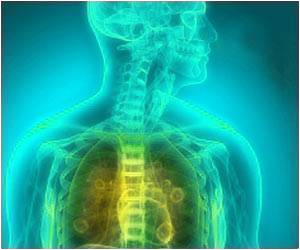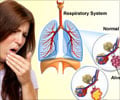
‘People who smoke cigarettes are 15 to 30 times more likely to get lung cancer or die from lung cancer than people who do not smoke, according to CDC.’
Tweet it Now
In addition to the IASLC, this regional lung cancer is organized under the aegis of the Thai Society of Clinical Oncology (TSCO), Chiang Mai Lung Cancer Group, Faculty of Medicine, Chiang Mai University (CMU) and the APLCC 2016 local organizing committee.APLCC 2016 is the seventh regional biennial lung cancer conference and it is returning to Chiang Mai after 12 years.
“This conference will provide an opportunity to a broad range of lung cancer experts to learn, share and deliberate on the latest advances from the frontiers of clinical and basic research, practical clinical management, immunotherapy and multidisciplinary care from Western and Asia-Pacific faculties. In addition to scientific sessions, there are sessions on related and compelling public health aspects such as tobacco control as well at APLCC 2016,” said Professor Sumitra Thongprasert, MD, Emeritus Professor at the Faculty of Medicine and Chiang Mai University and Chair of APLCC 2016.
Lung cancer is the most common cancer in the world. In Southeast Asia and China every year, there are approximately 800,000 new lung cancer cases and 750,000 lung cancer-related deaths.
- China alone has 700,000 new lung cancer cases and 600,000 deaths every year.
- In India, 70,275 new cases of lung cancer occur every year and annual deaths hover at 63,759.
- In Thailand in 2012, there were 19,505 new cases of lung cancer with 17,669 deaths.
Advertisement
A U.S. Surgeon General’s Report in 2014 stated that women smokers were 25.7 times more likely than women who never smoked to develop lung cancer – for male smokers, it was 25 times the risk of men who never smoked. Smoke from other people’s cigarettes, pipes or cigars (secondhand smoke) also causes lung cancer. Quitting smoking at any age can lower the risk of lung cancer.
Advertisement
“Lung cancer is the most preventable form of cancer death in the world. APLCC 2016 features tobacco control sessions prominently on the scientific agenda. Preventing lung cancer is a top public health imperative,” said Dr. Thongprasert.
Recognizing tobacco as the major and common risk factor for a range of life-threatening diseases including lung cancer Health Ministers from 11 countries in the region signed the Dili Declaration in September 2015, pledging to accelerate hard-hitting measures to reduce tobacco use. Implementing the WHO Framework Convention on Tobacco Control (WHO FCTC) in countries in the Asian-Pacific region and strengthening implementation of domestic tobacco control laws can also help save lives from lung cancer as well as other deadly diseases attributed to tobacco use.
Source: Shobha Shukla and Bobby Ramakant, CNS (Citizen News Service)














